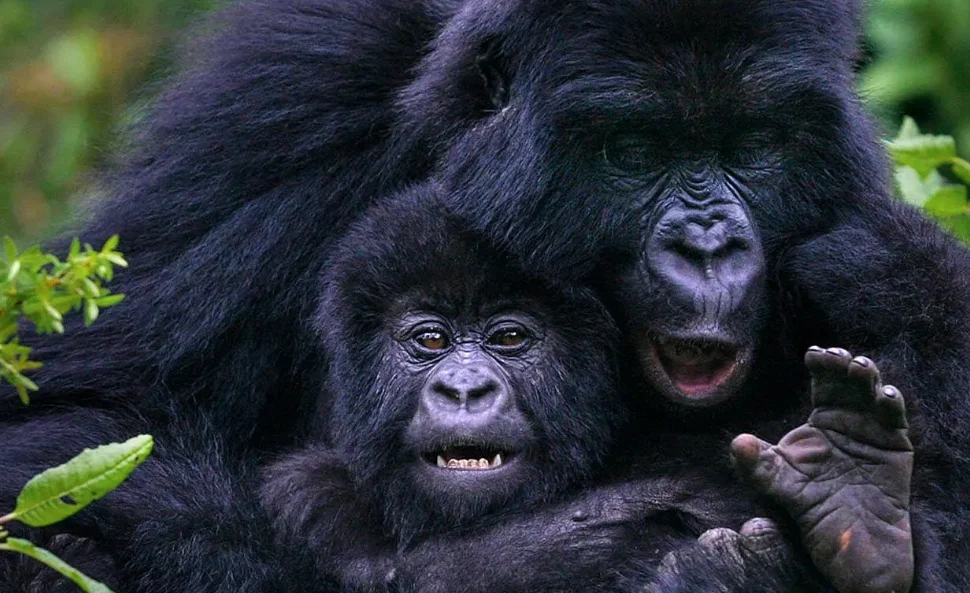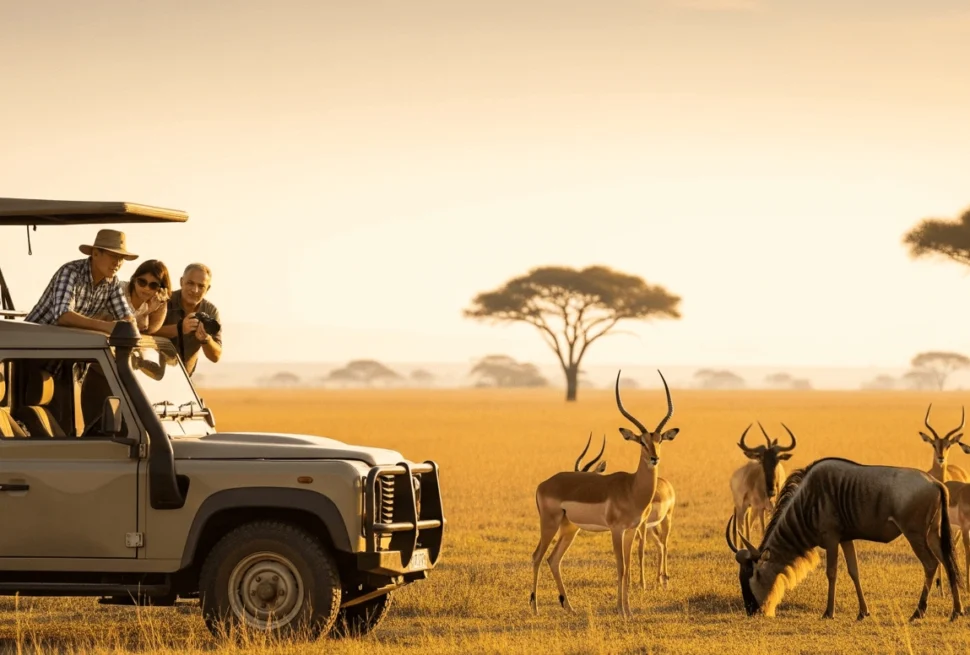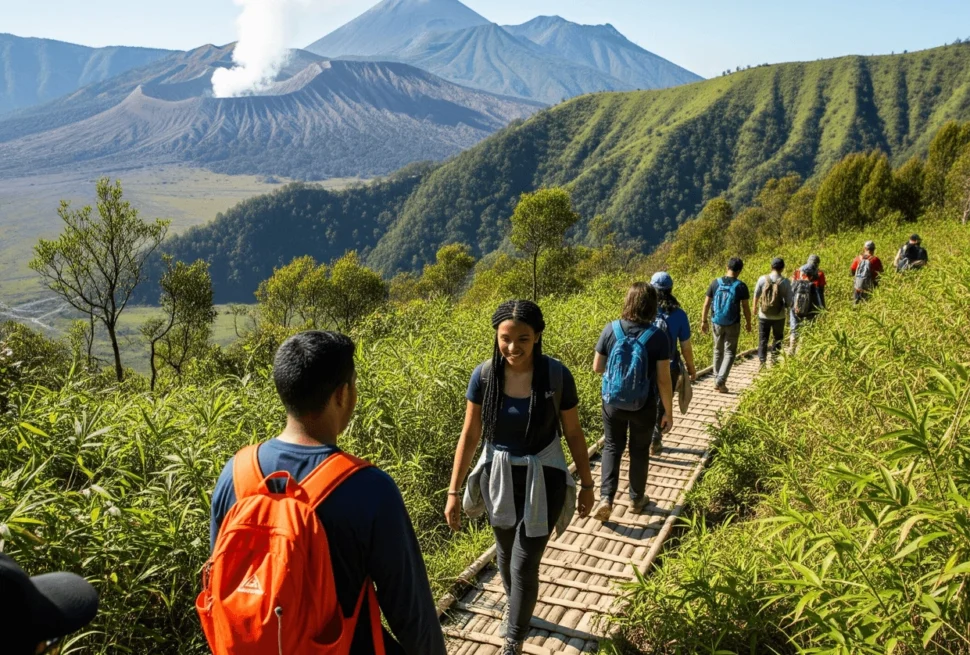Everyone talks about gorillas and chimpanzees — and fair enough, they’re incredible. But Uganda’s forests hum with so much more primate life. From wide-eyed bush babies to rare golden monkeys, there’s a whole cast of characters waiting in the canopy.
In fact, Uganda boasts more primate species than any other East African country — over 20 in total.
Some are elusive. Others leap across your trail without warning. All of them add texture, curiosity, and wildness to your journey.
If you’re the kind of traveler who craves the full story, not just the headlines — this is for you.
Key Takeaways
- Uganda hosts over 20 species of primates, the highest diversity in East Africa.
- Key species include golden monkeys, red-tailed monkeys, black-and-white colobus, olive baboons, and bush babies.
- The best places for non-gorilla primate sightings include Kibale Forest, Mgahinga, Budongo, and Bwindi.
- Dry seasons (June–August, December–February) offer the most reliable primate tracking conditions.
- Many primate experiences pair beautifully with gorilla trekking in Uganda or chimpanzee tracking in Kibale.
Uganda’s Other Primates
1. Golden Monkeys
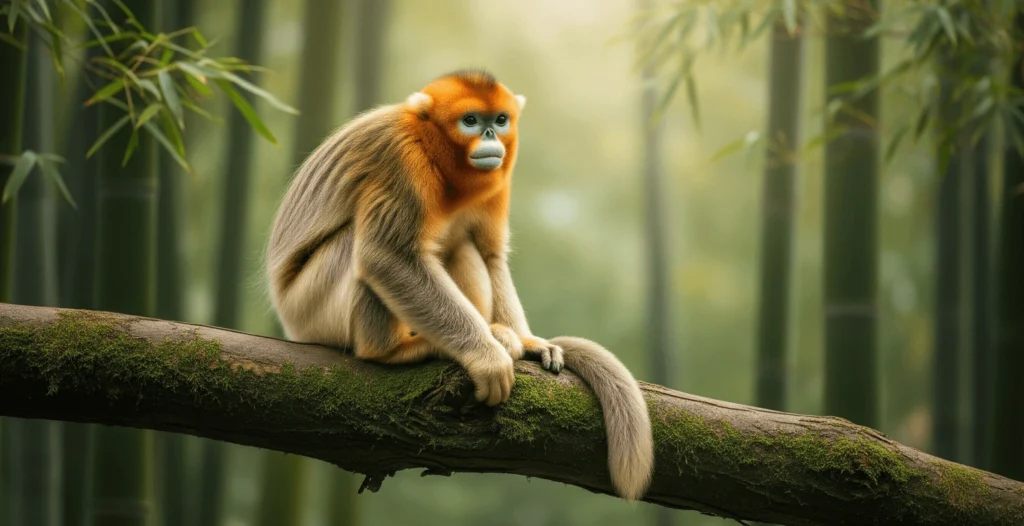
Golden monkeys are rare and endemic to the Virunga Volcanoes. With their fiery cheeks and twitchy energy, they’re a thrill to follow.
Head to Mgahinga Gorilla National Park to track them. The experience is shorter and lighter than gorilla trekking — perfect for families or as a warm-up trek.
And yes, they do pose for the camera… if you’re quick.
2. Black-and-White Colobus
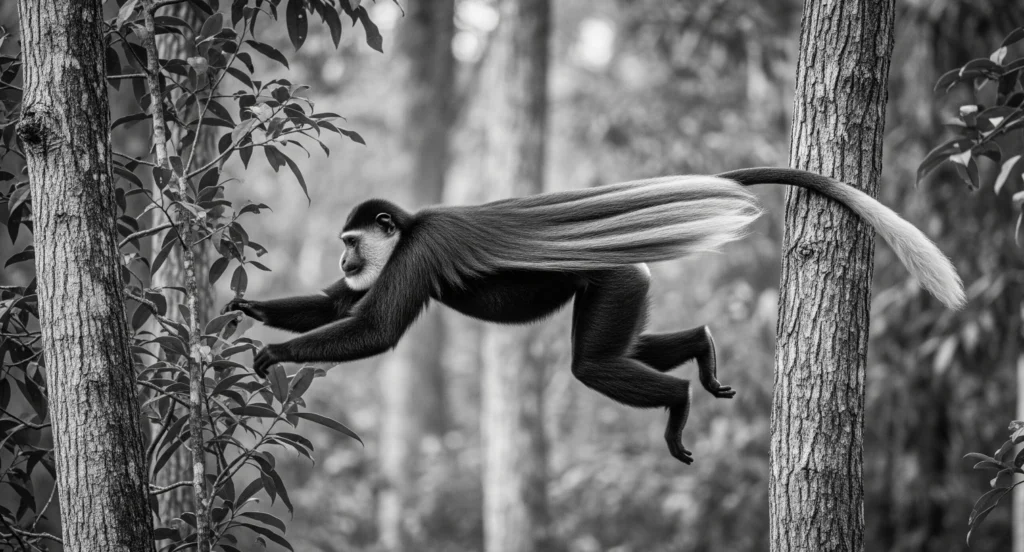
Long silky capes, monk-like faces, and an ability to leap 15 meters between trees — the black-and-white colobus monkey is pure elegance.
They live in troops and move silently through the canopy. You’ll see them in Kibale Forest, Bwindi, Budongo, and even on foot safaris in Lake Mburo National Park.
Watch for the young ones. Their all-white baby coats are disarmingly cute.
3. Red-Tailed and Blue Monkeys
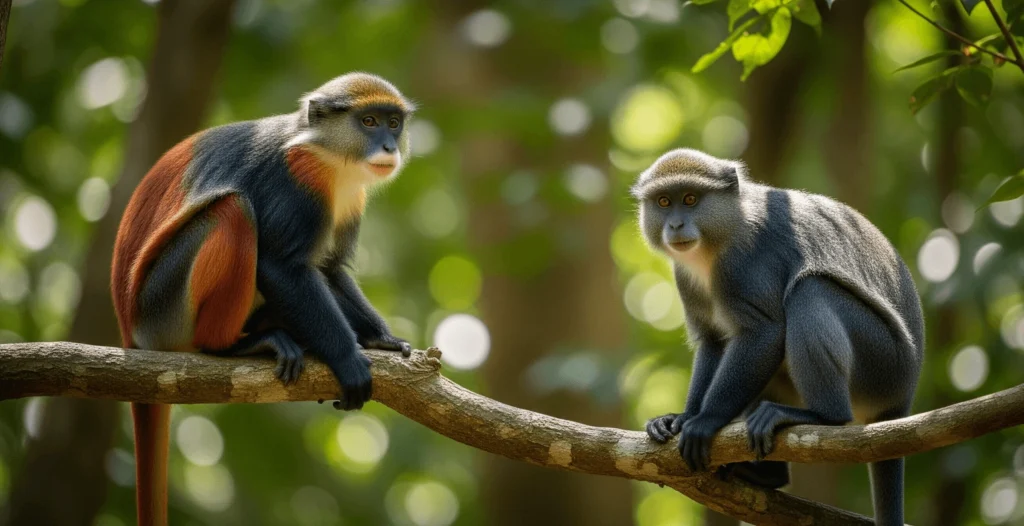
Both species are frequent companions on forest walks. Red-tailed monkeys are playful and expressive — known for their brick-red tails and white cheek whiskers.
Blue monkeys (which are actually greyish) tend to be more reserved but are often found in the same areas.
You’ll likely spot them in Kibale, Bwindi, and Mabira Forest — a great add-on if you’re also ziplining in Mabira Forest.
4. Olive Baboons
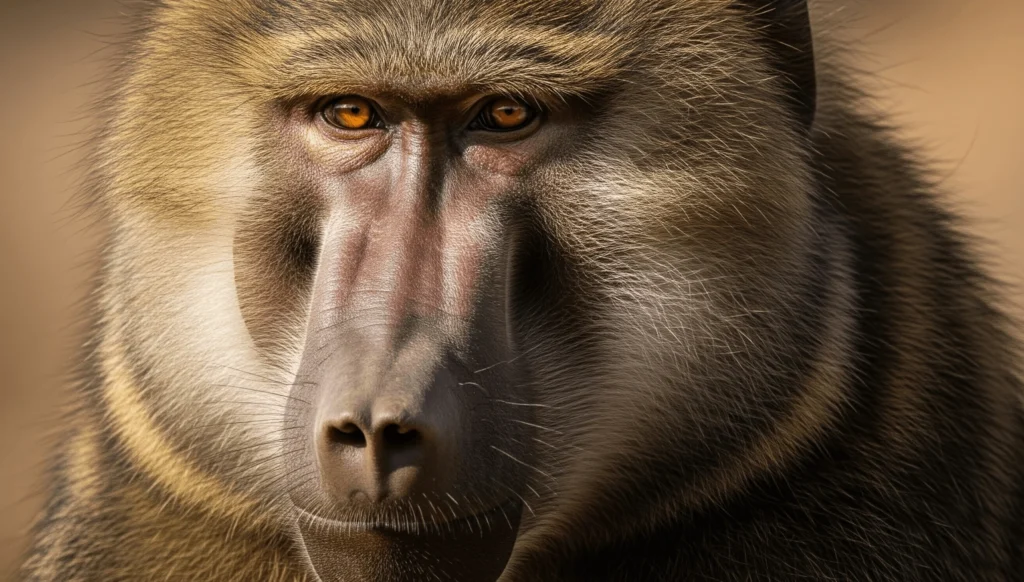
These guys don’t do subtle.
Olive baboons are Uganda’s most widespread primates, seen in nearly every national park from Queen Elizabeth to Murchison Falls.
They roam in large troops and are always up to something — chasing, grooming, or occasionally stealing fruit if you’re not careful.
Fun to watch. But keep your car windows rolled up.
5. Bush Babies & Pottos
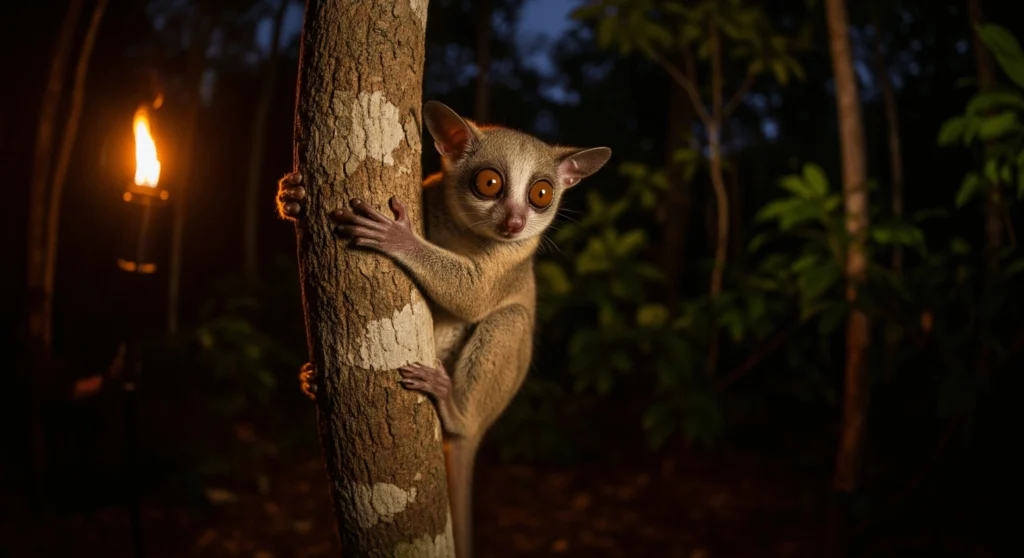
Bush babies (or galagos) and pottos are nighttime specialists, rarely seen during the day. But go on a guided night walk in Kibale, Budongo, or Semuliki, and you might just catch their glowing eyes in the beam of your torch.
Bush babies move with squirrel-like speed. Pottos are slower, deliberate, and oddly adorable.
They’re the quiet mysteries of Uganda’s forests.
Best Places to See Uganda’s Other Primates
Here’s where to go if you want to go beyond gorillas and chimps:
- Kibale Forest National Park — The primate capital. 13 species, dense populations, excellent guides. Don’t miss the chimpanzee tracking in Kibale, but keep an eye out for red colobus, blue monkeys, and bush babies too.
- Budongo Forest (near Murchison Falls) — A hotspot for colobus, red-tailed monkeys, and pottos. Pairs beautifully with a big game safari.
- Mgahinga Gorilla National Park — The only place in Uganda to track golden monkeys.
- Bwindi Impenetrable Forest — Better known for gorillas, but also home to l’Hoest’s monkeys, colobus, and more.
- Mabira Forest Reserve — Just an hour from Kampala, great for spotting red-tailed and blue monkeys. Combine it with ziplining in Mabira Forest.
Best Time of Year to See Primates in Uganda
Primate viewing is possible year-round, but the dry seasons (June–August and December–February) are the sweet spots. Trails are firmer, and monkeys are more active as they forage more visibly.
During the wet season, sightings can still be good — especially in Kibale, which has reliable primate populations — but treks are muddier and more challenging.
If you’re combining your trip with gorilla trekking, this seasonal timing also aligns with the best conditions for that experience.
Responsible Primate Tracking Matters
All primate species — not just gorillas — deserve respectful, low-impact encounters.
- Keep a safe distance.
- Don’t feed or imitate them.
- Follow your guide’s instructions — always.
These behaviors aren’t just polite — they’re critical for conservation and animal wellbeing. For more, read our guide to responsible travel in Uganda.
There’s a world in the trees — rustling, leaping, watching.
Gorillas may be the main event. Chimps get the crowd. But Uganda’s lesser-known primates? They’re the soul of the forest.
Let’s plan your perfect primate-rich safari. Request a quote — we’d love to guide you.
FAQ: Other Primates in Uganda
How many primate species live in Uganda?
Over 20 species — including monkeys, bush babies, baboons, and prosimians — making Uganda the most primate-rich country in East Africa.
Where can I see golden monkeys in Uganda?
Only in Mgahinga Gorilla National Park, where guided tracking experiences are offered daily.
Are night walks safe for spotting nocturnal primates?
Yes, when done with a registered guide in places like Kibale or Budongo. You may spot bush babies or pottos.
What’s the difference between red-tailed and blue monkeys?
Red-tailed monkeys have distinct red tails and expressive faces. Blue monkeys are more muted in color and less social with humans.
Can I combine primate trekking with gorillas or the Big Five?
Absolutely — many of Uganda’s primate forests are near top safari parks. See our guide to what are the Big Five and where to find them in East Africa.


